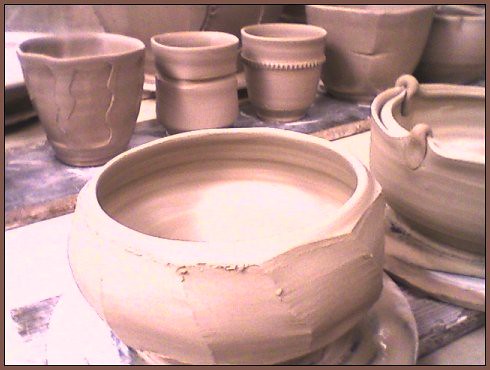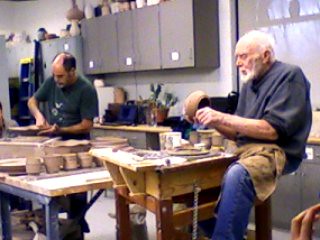There is an obvious correlation that exists in my life, but I only just now became cognizant of it. I spend over ten hours every week at a Korean dojang, and have for over six years. I have also been working on a potter’s wheel for eighteen. My efforts in each discipline are not as separate as I had assumed.
In the martial arts there is something referred to as ‘forms’. They are a series of postures strung together in order to condition your body. There are five elements to consider while doing the forms that engage your whole self: hands, feet, eyes, stances, and mind. By concentrating on these principles, one continuously strives to improve and ultimately perfect his/her forms.
Initially I trained my body to become aware of it’s place in space. It is a surprisingly difficult and mechanical endeavor. Looking into a mirror revealed many uninformed components that needed improvement. My shoulders were tight, my neck unaligned, and my back swayed uncomfortably. I sought the right balance between too large and too underscored of a movement. Then, wanting it to flow harmoniously, I had to learn economy of movement.
 At a pottery workshop I attended last week, Warren Mackenzie spoke of the right balance for a pot; knowing when to stop working while not short-changing your time spent on it. He said a piece needs a strong starting point and a strong finish, and that attention to each transition is key to making a pleasing form.
At a pottery workshop I attended last week, Warren Mackenzie spoke of the right balance for a pot; knowing when to stop working while not short-changing your time spent on it. He said a piece needs a strong starting point and a strong finish, and that attention to each transition is key to making a pleasing form.
The similarities in word choice with that of my martial art training caught my attention. It dawned on me that the form of a hand-thrown pot follows the same logic as a martial art form. I am aware of a pot's placement in space by seeing the profile of the pot, the negative space between a handle and the body, the overall composition. I look at my pots from the side, from above, below and sometimes by a cross-section. The shape must be informed and intentional.
 There is a movement to pots. They spiral up from the bottom. This movement can be loose or tight. It can be under-worked or over-worked. It can flow like a river or be dammed up by unrefined fingers. The body of a pot is perfect when the kicking feet are slow and controlled, the hands given it are fast and precise, and the mind working on it is calm and focused. Only then can the pot shine brightly.
There is a movement to pots. They spiral up from the bottom. This movement can be loose or tight. It can be under-worked or over-worked. It can flow like a river or be dammed up by unrefined fingers. The body of a pot is perfect when the kicking feet are slow and controlled, the hands given it are fast and precise, and the mind working on it is calm and focused. Only then can the pot shine brightly.
A perfect form should communicate the mood and awareness its maker. It should be alive with each step that was taken to create it. The principles taught and understood by the masters of each discipline transcend their art forms. They have seeped subconsiously into my actions, one benefitting the other and making each stronger. Sometimes the most conspicuous is the hardest to see.






